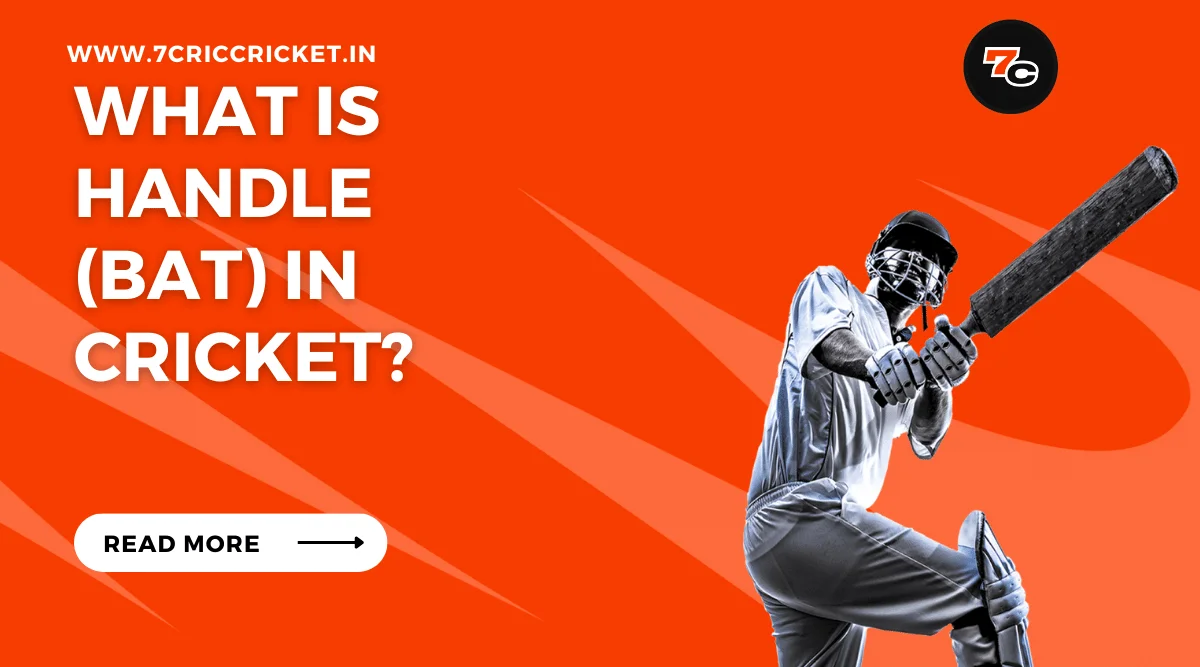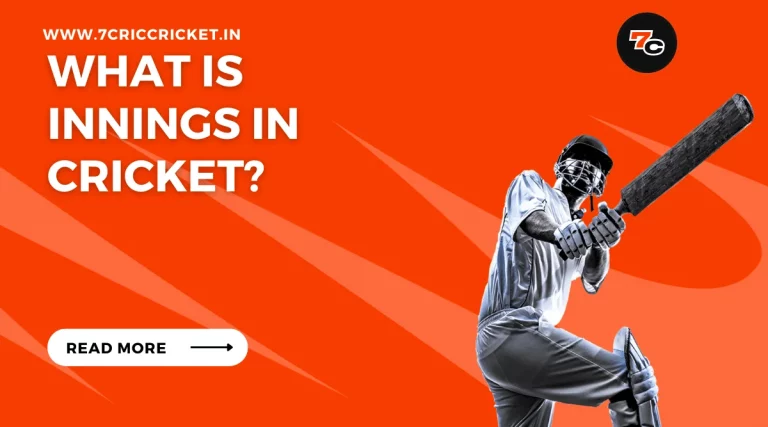What Is Handle (Bat) in Cricket?
Welcome to our informative article on the handle (bat) in cricket.
In this expertly crafted piece, we will delve into the intricate details of this essential component of a cricket bat.
Up to 75% Reload Bonus on Aviator
Up to 75% Reload Bonus on Aviator
- UPI, Paytm, gPay & PhonePe withdrawals
- The Biggest Bonuses in India
- 450% Bonus up to ₹1,000,000
From understanding its anatomy to exploring the purpose it serves, we will leave no stone unturned.
Furthermore, we will shed light on the materials used for handle construction, guide you on how to choose the ideal handle, and offer valuable insights on proper care and maintenance.
Prepare to enrich your knowledge with our technical expertise.
Key Takeaways in This Article
ShowAnatomy of a Cricket Bat
- The cricket bat consists of eight distinct parts that make up its anatomy. One of these crucial parts is the handle, which plays a significant role in a player’s performance and grip options. The handle is the part of the bat that allows the player to hold and control it while making shots.
- The handle grip options in cricket bats vary to cater to the preferences and playing styles of different players. Common grip options include the round handle, oval handle, and semi-oval handle. The round handle provides a traditional feel and is suitable for players who prefer a secure grip. The oval handle offers more control and stability, making it a popular choice among modern players. The semi-oval handle combines the advantages of both round and oval handles, providing a comfortable grip while maintaining control.
- The design of the handle has a direct impact on a player’s performance. A well-designed handle can enhance a player’s ability to control the bat, generate power, and execute shots accurately. The handle’s shape, thickness, and material all contribute to the overall feel and performance of the bat. A handle that is too thick or thin may affect a player’s grip and control, while a handle made from high-quality materials can provide better shock absorption and reduce vibrations.
The Purpose of the Handle
Playing a significant role in a player’s performance and grip options, the handle of a cricket bat serves the purpose of allowing the player to hold and control the bat while making shots.
The importance of grip in handle design cannot be overstated, as it directly impacts the player’s ability to maneuver the bat with precision and power.
With a well-designed and comfortable handle, a batsman can maintain a firm grip on the bat, ensuring optimal control during shots.
The handle of a cricket bat also plays a crucial role in batting technique. It provides stability and balance, allowing the batsman to maintain control and generate power in their shots.
A well-designed handle can enhance a player’s ability to play shots with precision, timing, and confidence.
On the other hand, a poorly designed handle can hinder a player’s performance, leading to discomfort, loss of control, and decreased shot quality.
In summary, the handle of a cricket bat is of utmost importance in a player’s performance. It not only allows the player to hold and control the bat but also influences their grip options and batting technique.
With a well-designed handle, a batsman can optimize their performance and maximize their potential on the field.
Now, let’s delve into the materials used for handle construction.
Materials Used for Handle Construction
The materials used for handle construction in cricket bats vary depending on the player’s preference, with commonly used materials including high-quality cane or composite materials.
The handle of a cricket bat is an essential component that connects the blade to the player’s hands, providing them with control and stability during their shots.
In recent years, handle design innovations have revolutionized the game of cricket. Traditional handles were made from natural cane, which provided excellent shock absorption and a comfortable grip.
However, advancements in technology have led to the development of composite materials such as carbon fiber and fiberglass.
These materials offer increased durability, lighter weight, and improved performance characteristics.
The historical evolution of cricket bat handles has seen a gradual shift from thicker handles to thinner ones.
Thicker handles were favored in the past as they provided better stability and control.
However, modern players tend to prefer thinner handles as they offer increased maneuverability and a better feel of the ball.
How to Choose the Right Handle
When choosing the right handle for a cricket bat, it is important to consider various factors that contribute to a player’s comfort and performance. Here are some key points to keep in mind:
- Choosing the right grip: The grip on the handle plays a crucial role in providing a secure hold and control over the bat. There are various types of grips available, such as rubber, octopus, chevron, and scale patterns. Each grip offers a different level of traction and feel, so it is essential to choose one that suits your personal preference and playing style.
- Handle length options: Cricket bat handles come in different lengths to accommodate players of varying heights and preferences. The standard handle length is usually around 12 to 15 inches, but longer and shorter options are available. It is important to choose a handle length that allows you to comfortably grip the bat and maintain proper balance during your shots.
- Handle shape: The shape of the handle can also impact your comfort and performance. Some handles have a round shape, while others may have a semi-oval or oval shape. It is advisable to try different handle shapes to find the one that feels most comfortable in your hands and provides optimal control.
- Weight distribution: The weight distribution of the handle can affect the overall balance of the bat. Consider the weight distribution between the handle and the blade to find a bat that feels well-balanced and allows for smooth strokes.
Choosing the right handle is crucial for maximizing your performance on the cricket field. Once you have made your selection, it is important to properly care for and maintain the handle to ensure its longevity and optimal performance.
Proper Care and Maintenance of the Handle
To ensure the longevity and optimal performance of the handle, it is essential to properly care for and maintain it.
Handle grip techniques play a crucial role in maintaining a firm grip on the bat and preventing any slippage during gameplay.
It is recommended to regularly check the grip and replace it if it becomes worn out or loses its effectiveness.
In addition to handle grip techniques, it is important to be knowledgeable about common handle issues and troubleshooting methods.
Here is a table outlining some common handle issues and their corresponding solutions:
| Common Handle Issues | Troubleshooting Solutions |
|---|---|
| Cracks or splinters | Apply wood filler and sand down the affected areas. |
| Loose handle | Reattach the handle using epoxy resin and reinforce with a binding tape. |
| Moisture damage | Dry the handle thoroughly and treat with linseed oil to restore moisture balance. |
| Warping | Place the bat in a press or use weights to straighten the handle. |
| Vibration | Balance the bat by adding counterweights or adjusting the grip to minimize vibrations. |
Conclusion
In conclusion, the handle of a cricket bat is a crucial component that allows the player to have control and maneuverability over the bat during gameplay.
It is typically made from high-quality materials such as cane or composite materials to ensure durability and flexibility.
Get up to ₹20,000 Bonus Every Week!
Get up to ₹20,000 Bonus Every Week!
- UPI, Paytm, gPay & PhonePe withdrawals
- Fast deposits with UPI
- 300% Welcome Bonus up to ₹10,000
Choosing the right handle is essential, as it can impact the player’s performance.
Proper care and maintenance of the handle are necessary to prolong its lifespan and optimize its performance on the field.
Frequently Asked Questions (FAQs)
What Are the Different Types of Grains Used in Cricket Bat Handles?
Different types of wood like English willow and Kashmir willow are commonly used in cricket bat handles.
Each type of wood has its own advantages and disadvantages in terms of durability, flexibility, and weight distribution.
Can the Handle of a Cricket Bat Be Replaced if It Gets Damaged?
A damaged cricket bat handle can significantly affect a player’s performance.
It can lead to decreased control, power, and stability while playing shots.
Using a cricket bat with a damaged handle can result in poor shots and potential injury.
Are There Any Specific Techniques to Grip the Handle of a Cricket Bat?
Proper grip techniques for a cricket bat handle are essential for a player’s performance.
There are various techniques to ensure a firm and comfortable grip, while also avoiding common mistakes in holding the handle.
What Is the Ideal Weight for a Cricket Bat Handle?
The ideal weight for a cricket bat handle depends on various factors such as player preference, playing style, and bat design.
Different handle shapes offer advantages in terms of grip and control, allowing players to optimize their performance on the field.
How Long Does a Cricket Bat Handle Usually Last Before It Needs to Be Replaced?
The lifespan of a cricket bat handle depends on various factors such as usage, maintenance, and quality.
Regular inspection, proper grip selection, and timely replacement are crucial for optimal performance and safety.








